National Parks in Sri Lanka
|
Namaste! It is a miracle that our voyage always leads us actually, where we want and should be. Once we manage to reach our destination, we realize that all our efforts were worth it. With this in mind, here is another adventurous edition covering the “National parks in Srilanka” that will keep you on the edge of your seat!
The island of Sri Lanka, spanning 65,610 km², lies off the Southern-most tip of the Indian sub-continent separated by a narrow strip of water, the Palk Straits. Pre-historic geological upheavals and seismic activity in the region have endowed the island with a variety of climatic zones, topography and habitats. Its geological isolation for millions of years permitted numerous ecological systems to evolve, thereby contributing to the diversity of species of fauna and flora that we observe today.
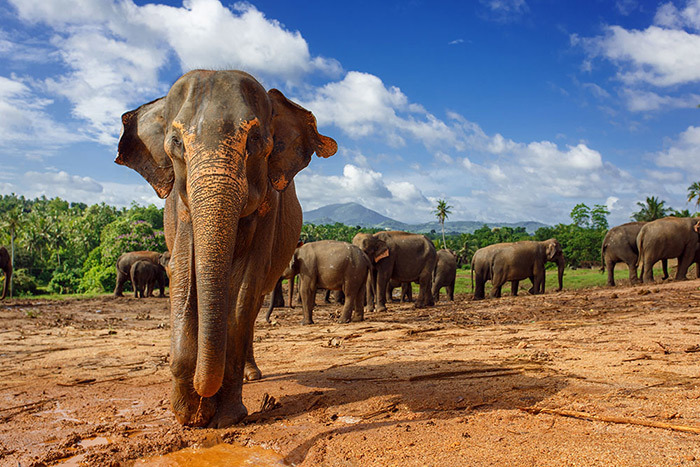
SRI LANKA is listed as having the highest species density in Asia, defined as the number of living species per 10, 000 km² and is one of the top five hotspots for biodiversity globally. Its jungles are composed mostly of rock formations with overhanging forest trees, villus (shallow sand rimmed ponds) that collect rain water, lakes and grasslands. Various formations of natural cover - from dry scrub vegetation to rainforests, riparian and mangrove forests - present ideal habitats to draw in wild life and birds, an absolute delight to all nature enthusiasts.
Several types of mammals, reptiles, amphibians, birds and butterflies have been identified in the island. The leopard, Sri Lanka’s top feline predator, lurks in and around the mountain forests as well as the low lands. Other mammals include the sloth bear, spotted deer, sambur, water buffalo and wild boar. Three species of primates: the macaque, langurs and the purple faced monkey, are seen within the boundaries of the parks, and more often than not close to human habitation. With over 120 species of mammals, 171 species of reptiles, 106 species of amphibians, 227 species of birds, and one of the world's largest populations of blue whales and sperm whales, Sri Lanka is truly a wildlife enthusiasts dream come true. Enjoy elegance and beauty of the Sri Lankan Wildlife in this short video
Here is our list of some of the fantastic National Parks in Sri Lanka:
YALA NATIONAL PARK
 Spread over 979 km² in the southeast corner of the country, Yala National Park is the oldest and the most famous national park in Sri Lanka. It is known for its rich variety of wildlife and plays a significant role in the conservation of a large number of flora and fauna species in Sri Lanka, many of which are endemic to the island.
Spread over 979 km² in the southeast corner of the country, Yala National Park is the oldest and the most famous national park in Sri Lanka. It is known for its rich variety of wildlife and plays a significant role in the conservation of a large number of flora and fauna species in Sri Lanka, many of which are endemic to the island.
Yala houses many ruins, including an earlier civilization's irrigation system, which indicates that once the area was prosperous and populated. The gigantic National Park is divided into five blocks that stretch from the jungles inland to the beaches on the Indian Ocean. Only blocks one and five are open for the public to preserve the natural habitat as much as possible.
What separates Yala from the other National Parks of Sri Lanka is that it holds the record for the highest density of Leopards in the world and is considered one of the best places in the world for spotting them in the wild. Apart from the leopards, other wildlife that can be spotted here is Elephants, Sloth Bears, Crocodiles, and Sambar deer, to name a few. It is an excellent park for Bird watching too. Enjoy glimpses of couch safari expedition at Yala National Park.
UDAWALAWE NATIONAL PARK
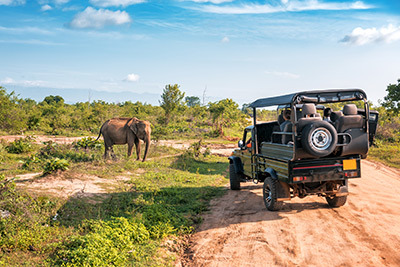 With an impressive concentration of wildlife across its open savannah plains, the most noted thing about Udawalawe National Park is its large and stable elephant population. The possibility is very high for spotting Elephants that roam around in clans here.
With an impressive concentration of wildlife across its open savannah plains, the most noted thing about Udawalawe National Park is its large and stable elephant population. The possibility is very high for spotting Elephants that roam around in clans here.
The National Park was established in 1972 to safeguard a reservoir, the waters of which are crucial for farming communities of the arid south-eastern zone. It is spread across 515 km², and the park now protects these waters at its center.
Some parts of Udawalawe are made of dense jungle and teak woodland that attract several types of other fauna. Though the Leopards are there in the park, but the sightings are rare. However, spotted deer, endemic toque monkeys, sloth bears, grey langur, sambar, jackal, crocodiles, monitor lizards, and water buffalo are spotted regularly. Birdlife here is just incredible, and you stand a good chance of sighting many of the 100 species during the migration season from October to March. These include wood sandpiper, common sandpiper, woodpeckers, kingfishers, sea eagles, egrets, wagtails, terns, and storks.
MINNERIYA NATIONAL PARK
 Minneriya national park is situated in the famous Cultural triangle of Sri Lanka consisting of Sigiriya, Dambulla and Polonnaruwa.
Minneriya national park is situated in the famous Cultural triangle of Sri Lanka consisting of Sigiriya, Dambulla and Polonnaruwa.
Designated as a National Park in 1997, this excellent nature reserve protects the catchments of three ancient irrigation tanks, which King Mahasen built in the 03rd century AD.
|
From May until October, thousands of tourist flock to this national park due to the famous ‘Elephant Gathering’. As the reservoir's waters recede during the dry season, lush grass exposes on the banks. Small herds of elephants from adjoining parks travel to Minneriya National Park thus forming several massive herds. The whole event is fascinating, and the visitors can get to sight hundreds of wild elephants taking baths or feeding on the banks. Sometimes herds of over 300 Elephants can be spotted at this national park. Once the rains set in, these elephants retreat into the surrounding jungles.
The park is well worth a visit around the year. Due to its fantastic topography and vegetation, Minneriya offers excellent mammal visibility. Though not in the same numbers, one can see Elephants in their natural settings during the non-gathering period as well. Among the 35 indigenous species of mammals, which reside in Minneriya, four are endemic, and ten species are threatened in Sri Lanka. Keystone species include the majestic elephant, leopard, and the unique Sri Lankan Sloth Bear. However, it is crucial to know that sighting a leopard or a Sloth Bear in Minneriya is rare. Other mammals include Spotted Deer, Sambar Deer, Mouse Deer, Purple-faced Leaf Monkey, Toque Macaque, Grey Langur, Wild Boar, Sri Lanka Flame- striped Jungle Squirrel, three species of mongoose, the porcupine, and the endangered Indian Pangolin.
Minneriya National Park boasts of more than 170 species of birds and depending on the time of year, one can have dazzling sight of endemic and migratory birds here. Exotic migratory waders such as the Wood Sandpiper, Kentish Plover, and Common Sandpiper can be seen here during winters. The reservoir is essential for large water birds, including the Lesser Adjutant, Spot-billed Pelican, and Painted Stork. Endemic species like Ceylon Grey Hornbill, Ceylon Hanging Parrot, Ceylon Green Pigeon, Black-capped Bulbul, Brown-capped Babbler, Ceylon Jungle fowl, and Ceylon Small Barbet can be seen here. Vulnerable species such as the Yellow-fronted Pied Woodpecker and the Fork-tailed Drongo- Cuckoo can also be seen in this beautiful park. A unique but common sighting here in is the aerial acrobatics of White-bellied Sea Eagles, proudly displaying their skills as they hunt for their dinner. Minneriya National Park forms one of the 70 Important Bird Areas (IBAs) of Sri Lanka. Enjoy glimpses of couch safari expedition at Minneriya National Park.
WILPATTU NATIONAL PARK
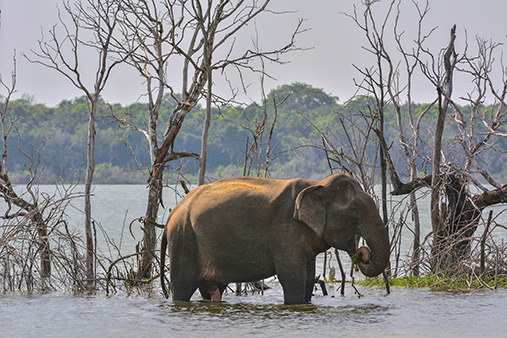 Wilpattu is another top national park for its leopard population in Sri Lanka. Covering around 1,085 km², Wilpattu National Park, often called the Land of Lakes, is now enjoying a renaissance after its doors were reopened for the visitors after 16 years of closure in 2003.
Wilpattu is another top national park for its leopard population in Sri Lanka. Covering around 1,085 km², Wilpattu National Park, often called the Land of Lakes, is now enjoying a renaissance after its doors were reopened for the visitors after 16 years of closure in 2003.
Wilpattu once was the most visited of all Sri Lanka's parks. Now it remains a relatively uncrowded and unhurried park filled with a network of 'Villu' (wetlands) reservoirs, dense scrub jungle, and grass-covered clearings.
The unspoiled seclusion of the park makes it ideal for those looking for a peaceful safari experience away from the crowds found in other areas.
The park is famous for Sloth bears and Leopards. Apart from this, one stands a good chance of spotting other mammals including elephants, spotted dear, barking deer, mongoose, and water buffalo. The rivers here are home to crocodiles and freshwater terrapins, and the network of Villus (wetlands) makes it an area with colossal birdlife diversity. Endemic species such as wood shrike, peacocks, brown-capped Babbler, Sri Lankan jungle fowl, and black-capped bulbul can be seen, but there is also a great variety of owls, storks, cuckoos, and terns, amongst others.
HORTON PLAINS NATIONAL PARK
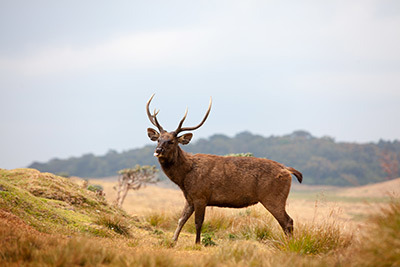 Horton Plains is the coldest and windiest region in Sri Lanka. There are different ecosystems here, such as Montane evergreen forests, marshy lands, grasslands, and aquatic ecosystems.
Horton Plains is the coldest and windiest region in Sri Lanka. There are different ecosystems here, such as Montane evergreen forests, marshy lands, grasslands, and aquatic ecosystems.
It is situated at an altitude of 2,100 meters above sea level and spreads over 31 km². Because of the many unique endemic flora and fauna species, Horton Plains, is listed as a UNESCO World Heritage Site.
Horton Plains consists of two distinct vegetation – montane grasslands and evergreen forests, with nearly 700 plants recorded, of which 27 are endemic to Sri Lanka. 24 species of mammals, 87 species of birds, nine species of reptiles, and eight species of amphibians make this national park unique and beautiful. The last Sri Lankan elephant roamed this beautiful national park in the 1940s. Today the largest and most commonly seen mammal here is the sambar deer. Added to the mystery and romance, one could enjoy the splendor of the leopard, the endemic purple-faced langur, the Sri Lanka bush warbler, and the Yellow-eared bulbul. Horton Plains forms an Important Bird Area (IBA) together with Ohiya, Pattipola, and Ambewela, containing 21 endemic bird species with four endemic to Horton Plains alone (Sri Lankan blue magpie, Sri Lankan white-eye, Sri Lankan wood pigeon, and dull-blue flycatcher). Horton Plains National Park is the only National Park in Sri Lanka where visitors can walk and explore the surroundings. The highlight here is the viewpoint called the ‘World's End’, where you could see the distance of 80 KM and the drop of 1000 meters on a clear day.
It is said that preserving Horton Plains is a call of duty for all Sri Lankans.
SINHARAJA FOREST RESERVE
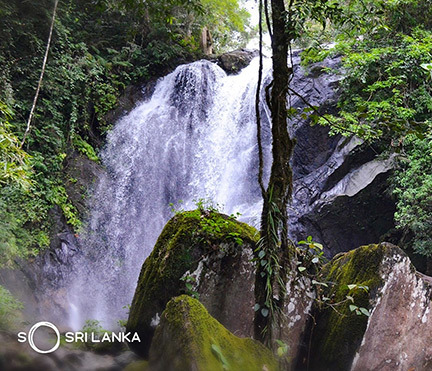 A paradise for bird lovers, Sinharaja Forest Reserve, is a unique lowland rain forest spread across 112 km². The Sinharaja Forest Reserve is a biodiversity hotspot and one of the least disturbed forests in Sri Lanka.
A paradise for bird lovers, Sinharaja Forest Reserve, is a unique lowland rain forest spread across 112 km². The Sinharaja Forest Reserve is a biodiversity hotspot and one of the least disturbed forests in Sri Lanka.
Since the Sinharaja Forest Reserve is the last remaining relatively undisturbed remnant of tropical humid evergreen forest in Sri Lanka, and the endemism here is exceptionally high, it was declared a UNESCO World Heritage Site in 1988. It is also the first natural site of Sri Lanka which was added to the UNESCO World Heritage Site.
The Sinharaja rainforest is home to many native birds such as Ceylon Hanging Parrot, Sri Lanka Grey Hornbill, Ashy-headed Laughing Thrush, Layard Parakeet, the Jungle fowl, the Spurfowl, the Ceylon Wood Pigeon, the Brown-capped Babbler etc. 19 of the 20 endemic species of Sri Lanka can be found in the Sinharaja Reserve.
Endangered birds include the Sri Lankan Pigeon, Green-billed Cod, Sri Lanka White-headed Starling, Red-faced Malkoha, Green-billed Caucasus, and the Ashy Headed Babbler.
Sri Lanka has 12 endemic mammal species, out of which 8 species can be spotted in the Sinharaja forest. Once can also spot Giant squirrel, dusky-stripped jungle squirrel, badger mongoose, endemic purple-faced leaf monkey and torque macaque here.
Many threatened species of mammals, reptiles, amphibians, and butterflies are found in the reserve. Endemism in mammals and butterflies is over 50% here. Reptiles and amphibians include python, endemic viper, endemic lizard, and horned lizard.
BUNDALA NATIONAL PARK
 Bundala National Park is another beautiful national park situated in the southern province of Sri Lanka, between Yala National Park and Tangalle. In 1969 Bundala was designated as a wildlife sanctuary, and on 04 January 1993, it was redefined to a national park. Today it is a UNESCO biosphere reserve with diverse wildlife and a Ramsar wetland site.
Bundala National Park is another beautiful national park situated in the southern province of Sri Lanka, between Yala National Park and Tangalle. In 1969 Bundala was designated as a wildlife sanctuary, and on 04 January 1993, it was redefined to a national park. Today it is a UNESCO biosphere reserve with diverse wildlife and a Ramsar wetland site.
A paradise for bird watchers & nature enthusiasts, Bundala is one of the most important bird areas. It is home to 324 recorded species of vertebrates and 52 species of invertebrates. This includes 197 species of birds, 48 species of reptiles, 32 species of fish, 32 species of mammals, and 15 species of amphibians.
From August till April (with December to March being peak season), this astonishing park shelters many migratory birds from Siberia and the Rann of Kutch in India, the highlight being the greater flamingos, which migrate in large flocks here. Get a glimpse of Birds of Sri Lanka.
Bundala also has giant squirrels, civets, and many crocodiles. From October until January, four of Sri Lanka's five species of marine turtles: green, olive ridley, leatherback, and loggerhead, lay their eggs on the coast of Bundala.
GAL OYA NATIONAL PARK
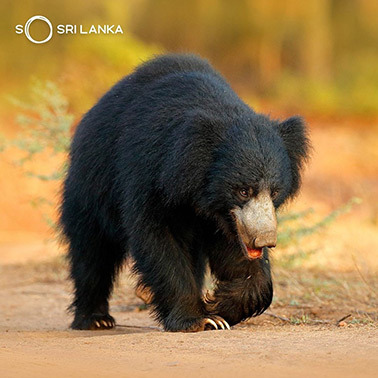 Gal Oya National Park is spread over an area of 259 km². When combined with Senanayake Samudra Sanctuary (93.24 km²), Gal Oya Valley North-East Sanctuary (124 km²), Gal Oya Valley South-West Sanctuary (152.81 km²), the whole Gal Oya Reserve sums up to an area of 629 km² of wildlife conservation.
Gal Oya National Park is spread over an area of 259 km². When combined with Senanayake Samudra Sanctuary (93.24 km²), Gal Oya Valley North-East Sanctuary (124 km²), Gal Oya Valley South-West Sanctuary (152.81 km²), the whole Gal Oya Reserve sums up to an area of 629 km² of wildlife conservation.
Gal Oya National Park is home to around 32 species of terrestrial mammals. The highest populations are endemic Toque Macaque, Common Langur, Leopard, Wild Boar, Sloth Bear, Elephant, three species of Deer, and Water Buffalo.
The flora of this national park is of three types: shrubs, forests, and grassland. Approximately 45% of the national park is covered by evergreen forest, 33% of the national park contains savanna-like grasslands, 9% of the national park constitutes mountainous grasslands, and 10% is the water bodies. The Gal Oya National Park is a dwelling place for some rare plants used in herbal medicine. The evergreen forest is dominated by Artocarpus species, Halmilla, Etamba, Kalumediriya, and Ebony.
Gal Oya is often explored by boat, thus offering a different experience altogether. The highlight of the park is swimming Elephants. They swim from one island to another, which is a fantastic sight. Bird nests with tiny babies in the little Islands are a unique sight that would keep you amused here.
Sri Lanka is among only a few countries where the population lives side-by-side with free-roaming animals. It isn't uncommon to see elephants crossing roads or sneaking into a hotel lobby – a unique and beautiful way of living. It is no justice to sum up these mesmerizing encounters in just a few words, as there are much more impressions to be had on a visit to these places. At Indo Asia Tours, the itinerary is not just a travel route or a trip. We design, conceptualize and handcraft every journey for you. Our bespoke itineraries and curated experiences in different destinations are what make for those memorable travel moments.
|
Virtual Destination Training Program
|
 We can conduct a virtual destination awareness training program for your team or yourself or a virtual tour for your clients. Let us know the destination of your interest along with your convenient date / time and we will be happy to set up a program for you.
We can conduct a virtual destination awareness training program for your team or yourself or a virtual tour for your clients. Let us know the destination of your interest along with your convenient date / time and we will be happy to set up a program for you.
Send Request
|
Please feel free to write back to us at marketing@indoasiatours.com to share our thoughts on customized journeys covering the Indian subcontinent or take time to visit our website https://www.indoasia-tours.com. Be sure we will prepare the best program to make a memorable trip for your esteemed clients!
|
|


 Spread over 979 km² in the southeast corner of the country, Yala National Park is the oldest and the most famous national park in Sri Lanka. It is known for its rich variety of wildlife and plays a significant role in the conservation of a large number of flora and fauna species in Sri Lanka, many of which are endemic to the island.
Spread over 979 km² in the southeast corner of the country, Yala National Park is the oldest and the most famous national park in Sri Lanka. It is known for its rich variety of wildlife and plays a significant role in the conservation of a large number of flora and fauna species in Sri Lanka, many of which are endemic to the island. With an impressive concentration of wildlife across its open savannah plains, the most noted thing about Udawalawe National Park is its large and stable elephant population. The possibility is very high for spotting Elephants that roam around in clans here.
With an impressive concentration of wildlife across its open savannah plains, the most noted thing about Udawalawe National Park is its large and stable elephant population. The possibility is very high for spotting Elephants that roam around in clans here.
 Minneriya national park is situated in the famous Cultural triangle of Sri Lanka consisting of Sigiriya, Dambulla and Polonnaruwa.
Minneriya national park is situated in the famous Cultural triangle of Sri Lanka consisting of Sigiriya, Dambulla and Polonnaruwa.
 Wilpattu is another top national park for its leopard population in Sri Lanka. Covering around 1,085 km², Wilpattu National Park, often called the Land of Lakes, is now enjoying a renaissance after its doors were reopened for the visitors after 16 years of closure in 2003.
Wilpattu is another top national park for its leopard population in Sri Lanka. Covering around 1,085 km², Wilpattu National Park, often called the Land of Lakes, is now enjoying a renaissance after its doors were reopened for the visitors after 16 years of closure in 2003.
 Horton Plains is the coldest and windiest region in Sri Lanka. There are different ecosystems here, such as Montane evergreen forests, marshy lands, grasslands, and aquatic ecosystems.
Horton Plains is the coldest and windiest region in Sri Lanka. There are different ecosystems here, such as Montane evergreen forests, marshy lands, grasslands, and aquatic ecosystems.
 A paradise for bird lovers, Sinharaja Forest Reserve, is a unique lowland rain forest spread across 112 km². The Sinharaja Forest Reserve is a biodiversity hotspot and one of the least disturbed forests in Sri Lanka.
A paradise for bird lovers, Sinharaja Forest Reserve, is a unique lowland rain forest spread across 112 km². The Sinharaja Forest Reserve is a biodiversity hotspot and one of the least disturbed forests in Sri Lanka.
 Bundala National Park is another beautiful national park situated in the southern province of Sri Lanka, between Yala National Park and Tangalle. In 1969 Bundala was designated as a wildlife sanctuary, and on 04 January 1993, it was redefined to a national park. Today it is a UNESCO biosphere reserve with diverse wildlife and a Ramsar wetland site.
Bundala National Park is another beautiful national park situated in the southern province of Sri Lanka, between Yala National Park and Tangalle. In 1969 Bundala was designated as a wildlife sanctuary, and on 04 January 1993, it was redefined to a national park. Today it is a UNESCO biosphere reserve with diverse wildlife and a Ramsar wetland site.
 Gal Oya National Park is spread over an area of 259 km². When combined with Senanayake Samudra Sanctuary (93.24 km²), Gal Oya Valley North-East Sanctuary (124 km²), Gal Oya Valley South-West Sanctuary (152.81 km²), the whole Gal Oya Reserve sums up to an area of 629 km² of wildlife conservation.
Gal Oya National Park is spread over an area of 259 km². When combined with Senanayake Samudra Sanctuary (93.24 km²), Gal Oya Valley North-East Sanctuary (124 km²), Gal Oya Valley South-West Sanctuary (152.81 km²), the whole Gal Oya Reserve sums up to an area of 629 km² of wildlife conservation.
 We can conduct a virtual destination awareness training program for your team or yourself or a virtual tour for your clients. Let us know the destination of your interest along with your convenient date / time and we will be happy to set up a program for you.
We can conduct a virtual destination awareness training program for your team or yourself or a virtual tour for your clients. Let us know the destination of your interest along with your convenient date / time and we will be happy to set up a program for you.




